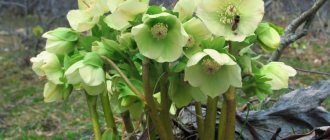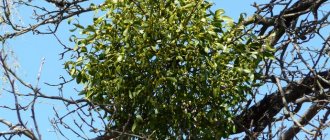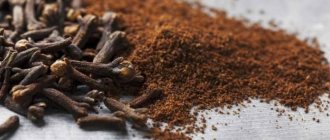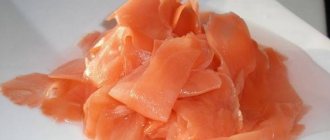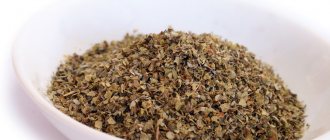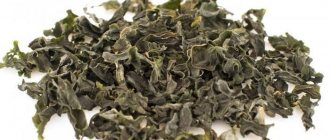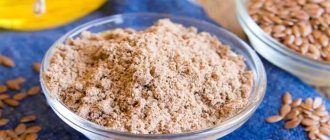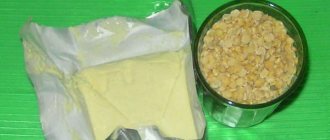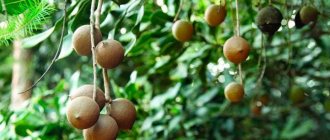Wintergreen is a perennial evergreen subshrub, the medicinal properties of which were used by the Indians of North America in the pre-Columbian era. Today, under the name Chimaphilae herba, the plant is included in the pharmacopoeia of the USA and Germany, where it is an official medicinal product.
Wintergreen has some contraindications for use due to its powerful, multiple effects on the body, applicable in the treatment of severe pathologies, neoplasms, and general weakness and exhaustion of the body.
Features of the winter lover
In Russia, the plant has many popular names - winter grass, pear, hogweed, hogweed, core. The perennial winter-loving plant is widespread in Altai and the Far East, and in the Komi Republic it is included in the local Red Book. The plant is found in the Non-Chernozem region. The shrub does not grow in other regions, so its healing qualities are little known.
Botanical description of winterweed
The name wintergreen, translated from the language of indigenous American peoples, deciphers some medicinal properties. The Indians called it “crushing” or “crushing” herb, which indicates the use of medicinal compounds for removing stones from the kidneys and gall bladder.
The Russian names of the grass “winter grass” or “winter grass” reflect the ability of the shrub to retain the bright green color of the foliage even under snow.
A miniature shrub no more than 25 cm high has creeping, powerful roots and creeping stems.
Ribbed woody shoots are covered with tough, pointed foliage of a juicy dark green color.
The upper part of the leathery plate is glossy, the lower part is pale. The shape of the leaves is elongated, lanceolate, with pronounced teeth along the edges.
The length of the plate is from 3 to 15 cm with a width of no more than 2 cm. When broken, the leaves emit a pleasant strong odor and have a sweet taste with a slight bitterness.
Wide, bell-shaped flowers of wintergreen are collected in umbrellas from 2 to 8 pieces. Petals in buds are white-pink, sometimes red.
The flowers have a sweet, menthol aroma. In the conditions of central Russia, buds appear in June and do not disappear until the end of July. After flowering, fruits set in the form of a round flattened box with seeds.
What parts of wintergreen are used for medicinal purposes?
Wintergreen exhibits medicinal properties and contraindications when using all parts of the plant. But it is most rational to harvest young shoots with flowering tops, no longer than 10 cm, or large leaves located at the base of the shoot like whorls.
The tops of the shoots and individual leaves are cut off with scissors or a sharp knife, trying not to disturb the roots of the rare plant. If treated with care, the perennial shrub is completely restored by the next season; cheese can be harvested from one bush many times.
Fresh herbs have a characteristic bittersweet taste and strong odor. Dried raw materials do not smell, but exhibit aroma in infusions and decoctions.
Wintergreen collection
The healing power of the above-ground part of the plant manifests itself during flowering, so the harvesting period is long - up to two months. In most of Russia, the harvest time for insects is in the second half of summer. Due to the limited growing area and the absence of dense thickets, the procurement of large quantities of raw materials is difficult.
Wintergreen is a plant of the northern hemisphere. It is quite difficult to find it on the territory of Russia in the temperate zone. The grass prefers sandy, dry soils of coniferous forests of Siberia and the Far East. Finding clumps of wintergreen is a great success. The rare plant is carefully harvested. When collecting raw materials, it is necessary to leave more than half of the above-ground part for the speedy restoration of the bush.
How to prepare wintergreen
Wintergreen preserves its medicinal properties and contraindications not only in its fresh form. For long-term use, the prepared raw materials should be dried. To do this, lay the shoots on a clean cloth or paper in a thin, loose layer and place them in a shaded place with good air circulation. In the fresh air, with low humidity, you can place the grass under a canopy.
You can prepare wintergreen in special electric dryers, setting the temperature to no higher than 40 °C. High-quality dried raw materials are easily rubbed with your fingers, but do not crumble during storage, the buds retain their shape, the leaves darken a little, but remain green. Dry medicinal herb does not have a distinct odor; the aroma appears when the raw material is brewed.
Storing wintergreen
Crushed raw materials are easier to store and easier to use. The ground dry parts of the plant are poured into hermetically sealed glass or ceramic jars and stored away from sunlight. But such grass quickly loses its healing qualities. For treatment, crushed wintergreen can be used for no longer than 10 months.
Properly dried wintergreen retains its medicinal properties.
By maintaining the integrity of the shoots and leaves, you can significantly increase the shelf life. The dried raw materials are laid out in boxes or linen bags without compaction. It is advisable to provide the plant with good ventilation. This will prevent the dried wintergreen from rotting. These raw materials can be used for treatment for about 24 months.
Decoctions and infusions for treatment are recommended to be prepared before use and not taken after 3 days. Alcohol extracts from wintergreen leaves and flowers have a strong healing effect. Extracts are stored in chemically neutral vessels under tight stoppers in a dark place. Tinctures have a healing effect for more than 3 years.
Growing wintergreen
Landing
Wintergreen is grown in partial shade on light, moist, well-drained soil. On swampy, highly acidic and saline soils, the plant develops poorly. The bushes are dug up in the forest and planted in an area where pine litter is first added to the soil for digging. After planting, the area is watered, and when the water is absorbed, the surface is mulched with organic material. Choose a site responsibly: wintergreen can grow in one place for up to 50 years.
Rules of care
Winter grass does not tolerate stagnation of water, so observe moderation when watering it. It is advisable to add a little citric acid to the water from time to time. Watering is done at the root of the plant. The well-moistened soil should be loosened the next day, while removing weeds.
- Bells: planting and care, types and varieties
It makes sense to mulch only young plants. For fertilizing, which is applied 2-3 times per season, use liquid mineral complexes or solutions of organic fertilizers - mullein (1:10) or bird droppings (1:15).
Chemical composition of wintergreen
In domestic medicine, the chemical composition of the herb has been little studied, although the population of Altai has been using it for treatment for centuries. The most pronounced effect in the composition of wintergreen is possessed by substances from the class of phenols, which give the plant a characteristic aroma.
Valuable compounds found in the herb:
| Aromatic phenols and derivatives: hydroquinone, chimaphilin, arbutin and others | They affect the kidneys and urinary tract, disinfect, and whiten the skin. |
| Terpenoids: taraxerol, ursolic acid, beta-amyrin | Powerful antioxidants, inhibit tumor growth, increase the production of your own interferon and stimulate the immune system |
| Flavonoids: hyperin, quercetin, avicularin, kaempferol | Regulate metabolic processes, enhance the work of enzymes, heal the liver, strengthen vascular walls |
| Chlorophyll tannins | Stop the reproduction and development of bacteria, remove toxins and poisons from the body, treat the gastrointestinal tract, heal wounds |
| Magnesium, sodium, iron; silicic, sulfuric, phosphoric acids | They nourish muscles (primarily the heart), saturate organs and tissues with essential elements, and participate in many biochemical reactions. |
Wintergreen exhibits medicinal properties and contraindications thanks to its rich composition, which is balanced so that the work of some compounds complements and enhances the effect of others.
The herb contains resins, sugars, bitterness, methyl esters and other valuable components. The nutritional value of the herb has not been precisely determined, but in medicinal doses wintergreen does not have a significant effect on the caloric intake of the diet. The ability of the drug to cleanse the body and stimulate metabolism can be used to reduce excess weight. The rich mineral composition supports the body during diets.
Composition and beneficial properties of the plant
Wintergreen is valued for the presence of a large number of biologically active substances. Especially highlight:
- vitamins;
- flavonoids;
- tannins;
- micro and macroelements;
- glycosides;
- triterpenoids;
- resins;
- bitterness;
- essential oil:
- phenols;
- organic acids.
Such a variety of natural components allows the plant to produce one or several medicinal effects at once:
- diaphoretic;
- antispasmodic;
- painkiller;
- restorative;
- anti-inflammatory;
- choleretic;
- tonic;
- astringent;
- disinfectant.
INTERESTING fact: Benefits of jasmine and contraindications
Regular intake of medications based on this medicinal plant will help control normal blood sugar levels, increase appetite, and improve digestion processes. It has also been noted that parasites are eliminated, wounds heal faster, swelling is eliminated and performance increases.
In addition to the positive qualities of wintergreen herb, its use may be prohibited, therefore it is necessary to take into account the contraindications of the plant.
Medicinal properties of wintergreen
Traditional medicine has centuries of experience in using medicinal herbs for joint pathologies, removing stones from the kidneys and liver, getting rid of benign tumors and oncology.
The main medicinal properties of wintergreen preparations:
- Anti-inflammatory and diuretic. Effective for inflammatory processes in the genitourinary system in women and men: pyelonephritis, cystitis, prostatitis, urethritis.
- Tonic and immunostimulating. It was used on the American continent during the Civil War to restore the strength of weakened soldiers during long marches in conditions of poor nutrition.
- General strengthening and restoring functions of muscles and ligaments. Altai healers successfully use winterweed for any disorders associated with physical overexertion. The herb helps to recover faster when internal organs prolapse, and is used for sprains and ligament injuries.
- Hemostatic and wound healing. For open wounds, burns, internal and external bleeding.
The medicinal effects of wintergreen are complemented by a mild analgesic effect, the ability to regenerate damaged mucous membranes, and stop the growth of pathogenic microorganisms.
For women
Wintergreen exhibits medicinal properties in many branches of medicine.
In gynecological practice, the herb has several areas of use:
- normalization of irregular menstrual cycles, treatment of infertility;
- therapy for uterine bleeding;
- auxiliary therapy for prolapse of the uterus, vagina, kidneys;
- postpartum restoration of reproductive organs;
- cystitis, vaginitis, pyelonephritis, genitourinary system infections.
For heavy or painful periods, wintergreen is used in the form of weak infusions and teas. For a glass of boiling water, just add 1 tsp. dry grass. The infused composition is drunk throughout the day or divided into 3 doses. Continue treatment until symptoms stop.
After childbirth, gynecological operations and to improve reproductive function, take decoctions and tinctures of twice the concentration: 1 tbsp. l. funds for a glass of water. Additionally, douching is carried out with the same composition once a day. Lotions and washing of the genitals with wintergreen decoction are indicated for dry mucous membranes during menopause.
Pregnancy is a strict contraindication to taking the herb.
During breastfeeding, wintergreen preparations are used only externally in lotions to eliminate milk stagnation and prevent mastitis.
For men
The toning and muscle tissue regenerating properties of the herb are useful for men engaged in active physical activity. Decoctions and tinctures help to heal injuries faster, relieve muscle pain, strengthen ligaments and tendons.
Other uses of winterweed for men's health:
- therapy for inflammation of the prostate, urethra, bladder;
- crushing and expulsion of stones and sand from the kidneys, bladder;
- detoxification of the body from the effects of alcohol intake.
Wintergreen helps remove toxins and poisons from the body due to constant chemical pollution, smoking, and contact with hazardous substances.
For children
The strong effect of preparations made from wintergreen does not allow their use for children under 12 years of age. External use is permissible in the absence of other disinfectants for emergency treatment of wounds, cuts, burns.
Simply mash the fresh grass and apply it to the affected area. It is acceptable to use powder from dry raw materials, which is sprinkled on cuts. For the treatment of fistulas, boils, festering, poorly healing wounds, washing with wintergreen decoctions is used.
Contraindications for taking wintergreen
Wintergreen, the medicinal properties and contraindications of which are associated with the same active ingredients, has several restrictions on its use.
Begin treatment with caution in the following conditions:
- The presence of large stones in the gall bladder or kidneys. The diuretic effect can cause stones to move.
- Tendency to blood clots, hemorrhoids, constipation - the astringent properties of the plant can aggravate the problem.
- Before stopping uterine bleeding using folk remedies, you should consult a gynecologist to identify the causes of the pathology.
Internal use of the herb is absolutely contraindicated at any stage of pregnancy, during lactation, or during exacerbation of any systemic diseases. Side effects from taking wintergreen include skin rash, headache, nausea, as signs of individual intolerance to the components of the plant. In such cases, treatment should be stopped.
Contraindications
Despite the large number of medicinal properties, wintergreen grass also has contraindications.
These include:
- thrombosis;
- haemorrhoids;
- sleep dysfunction;
- pregnancy and lactation;
- hypertension;
- constipation;
- thrombophlebitis.
When the medication is used correctly, the likelihood of developing side effects tends to zero. Their appearance is possible in case of violation of the dosage and dosage regimen. In rare cases, an allergic reaction occurs due to intolerance to the plant. Its characteristic feature is skin rashes. The most common side symptoms include:
- physical weakness;
- nausea;
- decreased appetite;
- dizziness;
- migraine.
Preparations in pharmacies based on wintergreen
The plant is included in the official list of medicines in the USA and Germany, where it is included in antirheumatic drugs and tonic drugs. The essential oil from the plant is popular in the UK. In Russia, wintergreen is not used as a medical raw material. There are no official pharmaceutical preparations from the plant on the Russian market.
The plant is little known in folk medicine outside its growing area. Wintergreen is widely used in Altai and the Kemerovo region. Dried herbs can be purchased in herbal stores and “green” online pharmacies.
Methods of treating winterweed
The plant is used for treatment in several forms:
- Infusion (tea) - for internal use, douching, wraps for mild forms of diseases and for prevention. Can be used for a long time, but no more than 2 weeks without a break.
- Decoction - orally for serious pathologies (joint pain, bleeding, stone formation); externally for non-healing wounds, ulcers, to relieve swelling.
- Fresh grass juice - for oncology, benign tumors internally and externally. Fresh mashed grass or cloth soaked in juice is applied to the areas of subcutaneous nodes and seals, for example in the mammary gland.
- Alcohol tincture - for acute pain, tuberculosis, inflammation of the respiratory tract. Externally in the form of compresses on inflamed joints.
Recipes for preparing homemade medicines from wintergreen differ from each other in the strength of their effect on the body. The fresh plant has the most powerful effect, but due to the limited regions where the plant is naturally available, dry herb products are more common.
Infusion or tea
Preparation of the drink begins by grinding dry herbs. The finer the fraction before brewing, the better the plant imparts properties to the drink.
Preparation:
- 20 g of dry wintergreen are ground into powder.
- Pour a glass of boiling water over the raw material.
- Cover and leave to steep for at least 6 hours.
- Take 2 tbsp. l. before every meal.
The infusion is designed for three days of treatment, during which the composition is stored in the refrigerator. The course of treatment usually does not exceed 2 weeks. After a 14-day break, therapy can be repeated.
The tea is prepared like an infusion, but you can drink it within a few minutes when the drink has cooled. This medicine has the most gentle effect; you can take it several glasses a day.
Decoction
This form has a more pronounced effect due to the release of a large amount of tannins and poorly soluble substances in the herb.
Cooking method:
- Dry wintergreen (1 tbsp) is poured with a glass of cold water.
- Slowly heating the mixture in a water bath, bring it to a boil.
- Simmer the broth under low heat under the lid for another 10 minutes.
- Remove from heat and cool slowly, covered with a towel.
The wintergreen decoction is taken internally, dosing in tablespoons. Before each meal, drink 1 tbsp. l. products (no more than 4 times a day).
Juice
Freshly harvested raw materials (the entire above-ground part is suitable) are turned through a meat grinder. The juice is expressed through gauze. The juice is taken 1 tsp, diluted in half a glass of water, twice a day.
Tincture
The alcoholic infusion of wintergreen has a high concentration of active ingredients, it is convenient to store and easy to dose. The shelf life of the product increases, and there is no need to prepare the product before each use.
Preparation of tincture:
- Raw materials are calculated based on the ratio of 10 g of dry grass per 100 ml of vodka (40%).
- Mix alcohol with wintergreen in a glass container, seal tightly, and place in a dark place.
- Infuse the mixture for at least 20 days, then filter it and then store it without sediment.
- The usual daily dose of the drug is 2 tsp, which is divided into several doses and diluted with water before use.
For malignant tumors localized in the glands, rheumatoid arthritis, sarcoidosis, the dosage is increased to 1 tbsp. l. three times a day. An alcoholic extract of winterweed takes full advantage of all the beneficial properties of the herb, but may be contraindicated in some diseases due to the presence of alcohol.
Collection and storage of wintergreen
Wintergreens harvest raw materials in dry summer weather. Only healthy vegetative parts are collected. Any debris and remains of other plants are removed. The herbs are dried in a dark, ventilated room. The drying temperature must be maintained within 50 ºC. An oven or drying cabinet is perfect for these purposes. When the raw material begins to crumble, which indicates the readiness of the herb, it is transferred to paper bags or boxes and left for storage in a ventilated room.
Dried wintergreen leaves can be used for about 3 years. During this time, valuable properties are preserved.
The use of wintergreen in folk medicine
Wintergreen is best known for its tonic properties, ability to help with organ prolapse, and healing the genitourinary system of men and women. But the use of the herb is not limited to the listed conditions.
Against parasites
The anthelmintic properties of winterweed are used in combinations with other herbs.
An alcohol infusion prepared from an equal amount of the following herbs acquires a strong antiparasitic effect:
- winterweed;
- hog uterus;
- thigh
Add 1000 ml of vodka to 100 g of a mixture of dried plants and leave for at least 4 weeks in a shaded place. Take 1 tsp of the product, diluted with a small amount of water, before meals for 30 days. After taking a break for 14 days, the course is repeated.
Treatment of the genitourinary system
For inflammation and infections of the urinary tract, as well as the kidneys, prostate, and ovaries, herbal preparations with wintergreen are used. The compositions not only treat the cause of the disease, but also remove decay products of infectious agents, restore normal hormonal levels, which helps to increase potency.
The collection is prepared from the following components:
- winterweed;
- parsley seeds;
- thorn flowers;
- wheatgrass rhizomes;
- black poplar buds.
Herbs are mixed in equal parts. 2 tbsp. l. The mixture is poured with 300 ml of boiling water and left until it cools completely. Drink 100 ml infusion before meals. Every day a new infusion is prepared, intended for a day.
Treatment of wounds and burns
Small wound surfaces, as well as itchy insect bites, can be disinfected with alcohol tincture of wintergreen in its pure form. When treating deep cuts, suppuration, ulcers, and joint pain, the extract is diluted with water 1:1 and used to impregnate lotions.
You can wash burns and apply painkillers and healing compresses only with aqueous compositions. Decoctions and infusions of wintergreen for extensive skin lesions are additionally taken orally. This strengthens the body’s protective functions and accelerates healing.
Oncology and benign tumors
A decoction of winterweed, prepared in the standard way, taken ½ cup on an empty stomach three times a day, helps to slow down the growth of pathological tissues. Particularly effective is simultaneous use with local lotions for subcutaneous tumors, damage to lymph nodes, glandular tissue, and precancerous conditions.
Wintergreen can be used for oncology in the form of a tincture. The alcohol extract is dosed in 1 tbsp. l. and take three times a day. For external lotions, dilute the tincture in half with water. Douching is best done with a decoction or infusion.
In combination with boron uterus, an infusion of winterweed is considered to help with uterine fibroids, erosions and polyps.
For diabetes
Wintergreen tea, when consumed regularly, gradually reduces blood glucose levels. Metabolism is enhanced, metabolic products and toxins are eliminated, which significantly improves the overall condition. Tea (infusion) can be drunk up to 3 times a day for a month, then a break of 7 days is required.
The same composition can reduce epilepsy attacks, relieve spasms and improve general condition. The tonic effect of the herb requires the last infusion to be taken 3 hours before bedtime.
For weight loss
In order to normalize weight, wintergreen is used as a strong tonic to speed up metabolism and saturate cells with valuable substances. Maintaining strength and good condition of muscle tissue and ligaments is especially important at the beginning of intense training for an unprepared, weakened body.
A decoction of winterweed when fighting extra pounds is prepared as standard, take ¼ cup up to 4 times a day for 2 weeks. Then the remedy should be replaced with another herbal preparation and continued use no earlier than after 14 days.
The herb itself does not have a fat-burning effect sufficient for weight loss. In combination with physical exercise and diet, wintergreen helps cleanse the body, maintain strength, and help muscle growth.
For respiratory diseases
Alcohol tincture helps to quickly cope with viral, bacterial and fungal infections in the mouth, pharynx, bronchi, and lungs. Wintergreen is effective for tuberculosis if used as an auxiliary treatment.
The extract is taken orally, 30 drops before meals, up to 4 times a day, diluting the concentrate with water. For gargling and inhalation, a decoction is used, which helps restore mucous membranes and relieves tissue swelling.
Winter-lover in cosmetology
The healing properties of medicinal herbs are used to maintain the beauty and youth of the skin, eliminate cosmetic defects, treat acne, cracks, and scars. Since preparations based on wintergreen, and in particular essential oil, are difficult to obtain, decoctions and infusions are used at home.
For problem skin
An alcohol tincture of the plant is used for spot cauterization of boils, fistulas, and acne. The peculiarity of the herb is that it can treat skin problems “from within” the body.
So the recipe for getting rid of acne is intended primarily for internal use:
- 10 g of dried raw materials are poured with a glass of boiling water.
- Leave covered for at least 20 minutes.
- Drink in small sips throughout the day.
- The same composition is used to wipe problem areas of the skin in the morning and before bed.
Treatment lasts at least a month. You can repeat the course to prevent new rashes after 14 days. The recipe helps get rid of acne, acne on the face, neck, back, and reduces the likelihood of scarring of wounds.
Quick mask for oily skin
Applying the following composition to your face every morning helps reduce sebum secretion and tighten pores:
- oatmeal – 1 tbsp. l.;
- citrus juice (lemon, orange, lime) – 1/2 tsp;
- Wintergreen decoction - 2 tbsp. l.
The ingredients are mixed to a thin paste and applied with massage movements to the face and neck. After 5 minutes, the composition is washed off with warm water. After the skin has dried naturally, you can apply makeup.
Scrub with winterweed
It is better to use oatmeal as a base, which themselves have a gentle scrubbing effect. To 2 tbsp. l. oatmeal, add dry winter grass, ground into a fine powder. Moisten the dry mixture with a medicinal decoction until it becomes a paste and add a few drops of light oil (macadamia, grape seeds, peach).
The scrub is applied to the face and massaged until the skin warms up, paying special attention to areas with increased oil secretion, blackheads, and enlarged pores. Leave the mixture on your face until dry. Wash off the scrub with warm water and then rinse with cold water.
Wintergreen exhibits excellent cleansing and healing properties for those prone to clogged pores and age spots. Contraindications to the use of the scrub are wounds, purulent rashes and the active phase of acne on the face.
Cosmetic ice
An effective remedy for restoring tone, relieving morning swelling, and reducing unwanted pigmentation is treating the face with ice cubes from wintergreen decoction.
Preparation and use:
- The decoction, prepared according to the usual recipe, is well filtered from the sediment and poured into molds.
- If desired, you can add a decoction of mint, lemon balm, parsley or a few drops of fir oil to the composition.
- The forms with the decoction are placed in the freezer.
- Rub ice cubes on the skin after waking up. The product can be used daily.
- The whitening effect appears gradually over 2 weeks, the refreshing and toning effect is noticeable after a few minutes.
The plant is recommended for use in any homemade formulations for oily and combination skin. Wintergreen decoctions enhance skin respiration, normalize blood flow, and improve tissue nutrition. To strengthen the roots and reduce the oiliness of the hair, it is useful to rub the decoction into the scalp after each use of shampoo.
Wintergreen, the medicinal properties of which have been known for many centuries, is still not widely used as a medicinal raw material in Russia. A simple, useful shrub has powerful healing properties and can help in the treatment of many diseases, but it also has contraindications.
When used correctly and in compliance with the recommended doses, the plant does not harm the body, but increases natural immunity, restores strength and restores health.
Article design: Vladimir the Great
Types and varieties of wintergreen with photos
Cultivated garden forms include the following plant species:
Umbrella wintergreen (Chimaphila umbellata)
Or common wintergreen, or wintergreen, is found in the taiga forests of Eurasia and is a low-growing evergreen shrub with woody stems and creeping rhizomes. The root system of the plant is fibrous and has short root layers. The leaf blades are collected into tight whorls and attached to the stems by petioles. The structure of the leaves is dense and leathery to the touch, the surface is painted dark green. The sharp-toothed edges of the plates are turned towards the top. The shape of the flowers is bells with drooping heads, painted pink. They gather at the top of the stem into a multi-flowered umbrella. Wintergreen fruits are spherical; after ripening, the peel cracks. The pulp of the fruit contains small achenes.
Japanese wintergreen (Chimaphila japonica)
The plant grows mainly in Korea and Japan, and for the Far East, this grass is generally considered one of the most common of those that can be seen in the taiga. The perennial has a creeping rhizome. The lower tier of leaves is covered with scales. The shoots are erect and directed towards the sun. The height of the shoots does not exceed 15 cm. The leaves are arranged in opposite order and alternate with lanceolate and finely serrated leaf blades. The flower heads point down. Their diameter ranges from 13 to 18 cm. The length of the spherical seed capsule is 5 mm.
